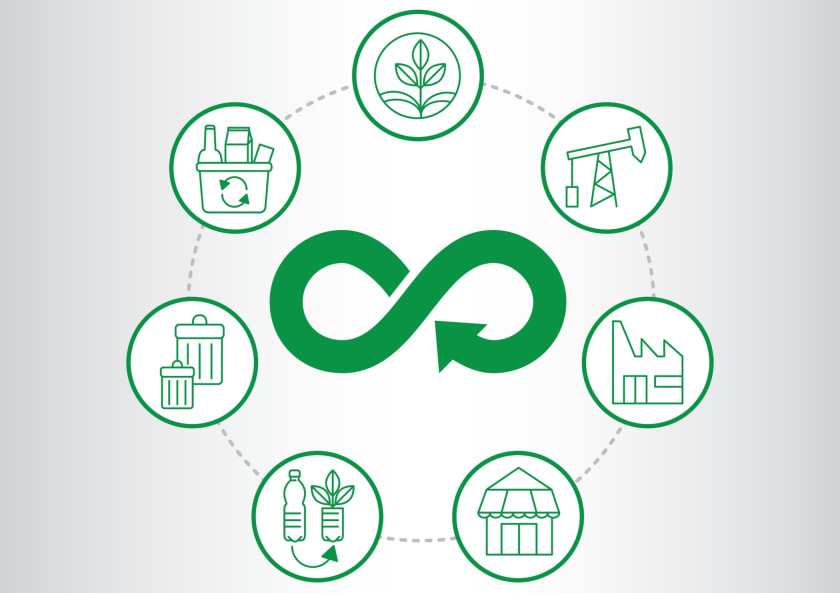5 Complexities of Circular Fashion



Ever thought about what it takes to create denim jeans? What resources, natural or artificial, are used during the production process? Consumption and manufacturing that are sustainable are critical components in protecting finite natural resources and averting climate change. Increased consumption in the textile sector is mostly due to fast-changing, inexpensive fashion, which leads to an increase in textile waste. Energy usage, water use, chemicals, dyes and finishes, and greenhouse gas emissions are all factors in textile production's environmental effect.
Circular fashion is aligned with the sustainable model of business involving concepts of retailer, design or manufacture, consumer usage, and recycling sector.
Some questions to be considered by fashion enthusiasts:
- Is this a garment that will last for a long time?
- How long do you think the consumer will wear these?
- Is the fashion trend timeless?
- Are the materials sourced by the manufacturing team sustainable, and can they be dismantled, reused, or biodegraded?
Textile manufacturing is one of the world's most polluting businesses. Circular economy meaning, in context with the fashion economy, refers to a sustainable development model. It requires balanced coordination with the economic, environmental, social, and technological aspects of a process. Circular fashion is based on the concept of circular economy and sustainable development. It refers to the fashion industry, including apparel, outdoor wear, garment, accessories, and sportswear. While a lot of apparel businesses are inclined towards circular fashion, there are many challenges associated with it.
Some of the big names in the fashion industry have adopted circular fashion strategies. These include H&M, Patagonia, Worn Again, Filippa K, C&A, and Nudie Jeans. There are various local brands as well that are influenced by the concept of maintaining a circular economy within the fashion industry.
Below are the 5 complexities with circular fashion:
1. Cultural Barrier
The primary impediment to applying the circular fashion or circular economy concept in any firm is cultural obstacles. The key issues, particularly in the garment industry, are a lack of customer interest and knowledge, as well as business culture and functioning inside a linear system. The main thing that acts as a barrier is the consumer's interest and awareness of circular fashion. Consumers are uninterested in paying a higher price for a sustainable product. Existing ready-made company models are based on sales volume. As a result, the price of the specific sustainable product would be greater. Customers are discouraged from purchasing as a result of this. Even if teenagers, in general, have a high level of understanding about environmental and/or social issues, this does not convert into purchasing habits. Consumption of more sustainable clothes is hampered by a lack of availability, accessibility, and price of sustainable choices. Furthermore, a lack of product knowledge is a stumbling block.
2. Identification with Brands

If Tom likes jeans from Levis, it is highly unlikely for him to switch to a different brand unless it has something unique or special to offer!
Young shoppers recognize just a few companies connected with sustainability. Customers are less interested in buying sustainable circular goods because they believe sustainable apparel is unattractive and out of style. Furthermore, purchasers are limited by concerns like the disincentive to repair and the lack of nontoxic alternatives to dry cleaning, as well as the washing requirements of sustainable clothing. Individuals want to buy more things as civilizations progress and people have more disposable cash; therefore, they want to acquire more objects that will eventually be discarded. This consumer habit has resulted in a more transitory relationship with clothes, with perfectly good articles tossed off before they are worn out because garments can be changed more easily and quickly than they can be mended or replaced.
3. Technological Barrier
The technological requirement of the circular product is one of the important factors to be considered. The availability of the proper technology at every manufacturing stage of the circular product is necessary to produce a 100% circular product in the market. The existence of the technology in the different sectors of the market is still a question mark. Even when the organization is ready to innovate the new design concept and their respective manufacturing methods, the process is time-consuming and very slow.
The availability of historical data is a critical component that motivates scientists and researchers to develop new ways. The recycled material's quality must be increased by adequate technical changes to the present method. In the case of garment items, a proper procedure for collecting worn clothes from local municipal levels to national levels should be in place. Technological obstacles in separating recycled items into high-quality raw materials and assembling them into a high-quality product have to be defined and standardized in a nationalized manner as a result of this procedure. Within enterprises, there is a lack of an information exchange system, logical training and skillfulness, and knowledge, as well as inefficient data distribution across suppliers. In addition, there is little data and expertise to stoke the need for supply chain coordination.
4. Market Barrier

As circular fashion products are costly, the market for those clothing is also a niche market. The interested consumers are willing to pay extra for environmentally and socially responsible clothing. The general market barriers of circular fashion can be as follows:
- The circular fashion sector is a small part of the industry that might be difficult to differentiate from the rest. This category consists of a limited number of customers, businesses, and organizations.
- Customers in this industry have very particular acoustic requirements. As a result, in order to solve issues, people are willing to pay more for clothing. This might lead to a lot of confusion.
- The rising cost of virgin material in the market raises the production cost of the circular product over that of the type's conventional product.
- Their purchasing power and economic capability determine their wants and desire to acquire goods.
- To match consumers' expectations, the intricacy of the demands necessitates specialized operations and qualified providers. In most cases, there is a shortage of suppliers.
5. Barriers Related to Government Regulations
The existing government policies and regulations are fundamentally based on the linear economic system that encourages disposal. Hence, the regulations of the governments are not contained with enough information about the circular approach. They may hinder the transition to a circular economy. Legislation and policies can cause four types of barriers:
- Unclear or fuzzy messages from regulation.
- Multiple complex and changing regulations.
- Low pressure from regulation and a lack of control.
- Regulation limits room for innovation.
In the domain of garbage collection from various waste sources, the government lacks laws and regulations. As a result, the wastes get jumbled up, the quality deteriorates, and the cost of recycling rises. The use of recycled materials in manufacturing processes is currently prohibited by government restrictions. This is because the recycled product's quality is taken into account.
Manufactured goods should be made to be reusable, repairable, and recyclable. The majority of waste laws focus on quantity (weight-based collection or recycling objectives) rather than recycled material quality. Several studies conducted by various organizations indicated that developing or supporting circular economy alternatives such as prevention, reuse, or high-quality recycling requires an integrated understanding of legislative hurdles and economic incentives. Regulatory hurdles nearly often do not ultimately restrict or preclude more circular solutions, but they do make them more expensive (sometimes needlessly) than standard linear alternatives.
Connect with Fashinza to source sustainably for your fashion brand and enjoy a hassle-free delivery process. Check out the Fashinza website today!



















